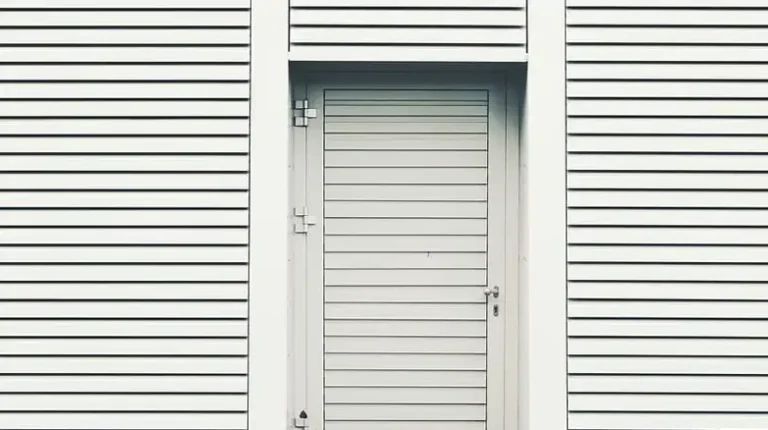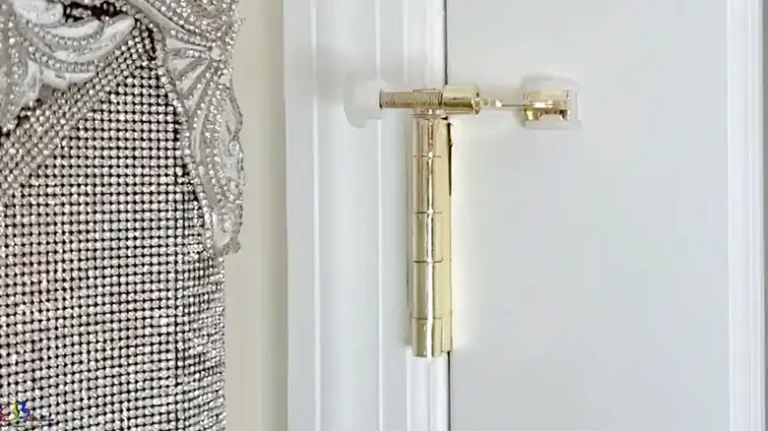Door Too Thin for Knob | Doorknob Solutions for Thin Doors
Have you ever tried to install a door knob on a door that is too thin? If so, you know that it can be a frustrating experience. The standard door knob thickness is 1-3/8 inches, but some doors can be as thin as 1-1/4 inches. This can make it difficult to find a door knob that fits properly.
One common solution is to use a spacer ring or collar. This is a thin metal ring that is inserted between the door knob and the door. This helps to fill the gap between the door and the knob, making it easier to install and secure the knob.
If you are still unsure about how to install a door knob on a thin door, or if you are having trouble finding a door knob that fits properly, then read on. This article will provide you with all the information you need to successfully install a dor knob on a thin door.

Potential Issues You Can Have While Installing a Knob on a Too-Thin Door
While installing a doorknob on a door that is too thin, the process can be challenging and during the installation process, there are a few potential issues you can have.
1. Weak Grip
One of the primary problems with thin doors is that they lack the structural integrity of thicker ones. When you try to install a standard doorknob, you might find that it doesn’t securely grip the door. This can lead to wobbly handles and potential accidents.
2. Screw Length
The screws provided with most doorknobs are designed for standard door thicknesses. When dealing with a thin door, these screws can protrude too far into the door, causing damage or even preventing the door from closing properly.
3. Alignment Issues
Thin doors are more likely to warp or bend. This can result in alignment problems when trying to install a doorknob. A misaligned knob can be frustrating to use and may not provide adequate security.
4. Knob Not Flush with Door
If a door knob does not sit flush against the door, it can make it difficult to turn because there will be a gap between the knob and the door. This gap can also make the knob look unsightly, as it will not be aligned with the door.
What to Do for Installing a Knob on a Door That Is Too Thin
Now that we’ve identified the challenges, let’s explore some solutions –
1. Choose the Right Knob
The recommendation to choose a doorknob specifically designed for thin doors is important because standard doorknobs are designed for doors that are at least 1-3/8 inches thick. If you have a door that is thinner than this, then using a standard doorknob will result in the screws protruding excessively. This can make the doorknob difficult to operate and can also make it more susceptible to damage.
Doorknobs that are specifically designed for thin doors typically have shorter screws and a different mounting mechanism. This allows them to be installed without protruding through the door. Additionally, these doorknobs are often made of stronger materials, which makes them more durable.
2. Reinforce the Door
Reinforcing the door with a wooden block on the inside is a good way to strengthen the grip of the doorknob, especially if you are using a doorknob that is specifically designed for thin doors. The wooden block will provide a sturdier surface for the screws to hold onto, which will make the doorknob less likely to come loose or be damaged.
To reinforce the door, simply cut a piece of wood that is slightly thicker than the doorknob and slightly wider than the mounting hole in the door. Then, glue the wooden block to the inside of the door, directly behind the mounting hole. Once the glue has dried, you can screw the doorknob into the wooden block.
3. Use Spacers
If alignment is an issue, consider using spacers. These small, disk-shaped components can be placed behind the knob to ensure it sits flush with the door’s surface.
Using a spacer ring or collar under the lock mechanism for a thin door is a viable solution. Spacer rings are typically made of aluminum or steel, and they come in a variety of thicknesses to accommodate different door thicknesses. They are simply inserted between the door and the lock mechanism, and they do not compromise the security of the lock.
4. Seek Professional
Help If you’re unsure about tackling this on your own, don’t hesitate to seek the assistance of a professional handyman. A professional handyman will have the expertise and tools to handle tricky installations. They will be able to choose the right doorknob for your thin door and install it correctly. They will also be able to troubleshoot any problems that may arise.
Which Knobs Are Best for Thin Door
Now that you know how to tackle the challenge of installing a doorknob on a thin door, you might be wondering which knobs are the best options. Here are a few recommendations
- Kwikset Juno Knob
This knob is known for its versatility and is suitable for both standard and thin doors. It comes with adjustable screws to accommodate various door thicknesses.
- Schlage Plymouth Knob
Another excellent choice, the Schlage Plymouth Knob, offers durability and a secure fit on thinner doors.
- Probrico Privacy Doorknob
This knob is specifically designed for thinner doors and is easy to install. It’s an affordable option without compromising on quality.
People Also Ask – PAA
Can I use longer screws on a thin door to secure the knob better?
It’s not recommended to use longer screws, as they can protrude too far into the door. Instead, opt for a knob designed for thin doors or use spacers for a secure fit.
Are there any aesthetic options for doorknobs for thin doors?
Absolutely! Many knob manufacturers offer a variety of styles and finishes, so you can choose one that matches your door’s aesthetics while ensuring a secure fit.
Do thin doors compromise security?
Thin doors are generally less secure than thicker ones. To enhance security, invest in high-quality locks and consider reinforcing the door during installation.
What’s the average thickness of a standard interior door?
Standard interior doors are typically around 1 ⅜ inches to 1 ¾ inches thick.
Can I use a door knob on a door that is 1 ¼ ” thick?
Yes, there are some door knobs available that are specifically designed for doors that are 1 ¼ ” thick. However, it’s important to make sure that the screws are long enough to reach the interior frame of the door.
Can I use a door knob on a hollow core door?
It’s not recommended to use a door knob on a hollow core door because it’s not strong enough to support the weight of the door.
Conclusion
Installing a doorknob on a thin door may seem like a daunting task, but with the right knowledge and tools, you can overcome the challenges. Remember to choose a knob designed for thin doors, reinforce the door if necessary, and use spacers or seek professional assistance for a seamless installation. By following these steps, you can enjoy both functionality and aesthetics without compromising security. So, go ahead and give your thin door the knob it deserves, and may it open many doors of opportunity for you. If you have any more questions or need further guidance, feel free to leave a comment below. Happy DIY-ing!





![[Answered] Can Door Knob Be Used Outside?](https://doorsuggest.com/wp-content/uploads/2023/09/Can-Door-Knob-Be-Used-Outside-768x431.webp)